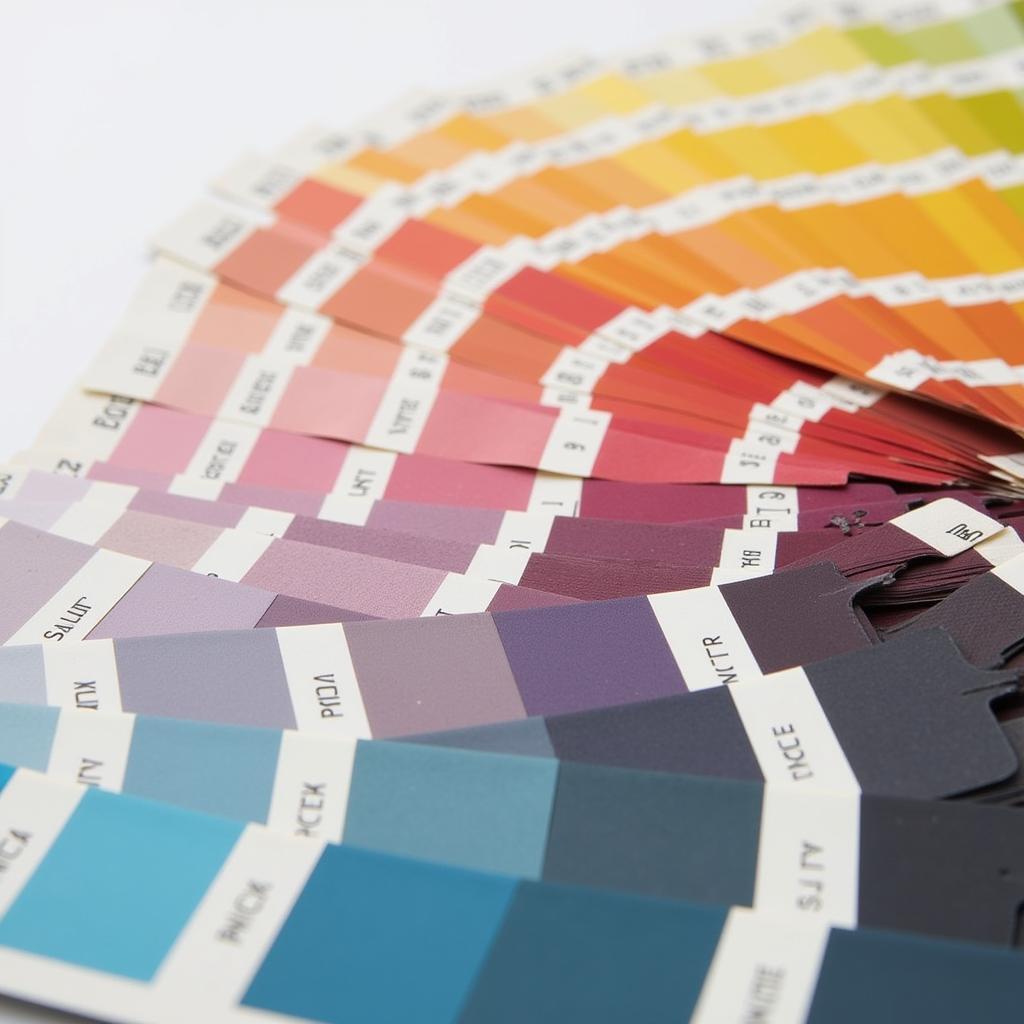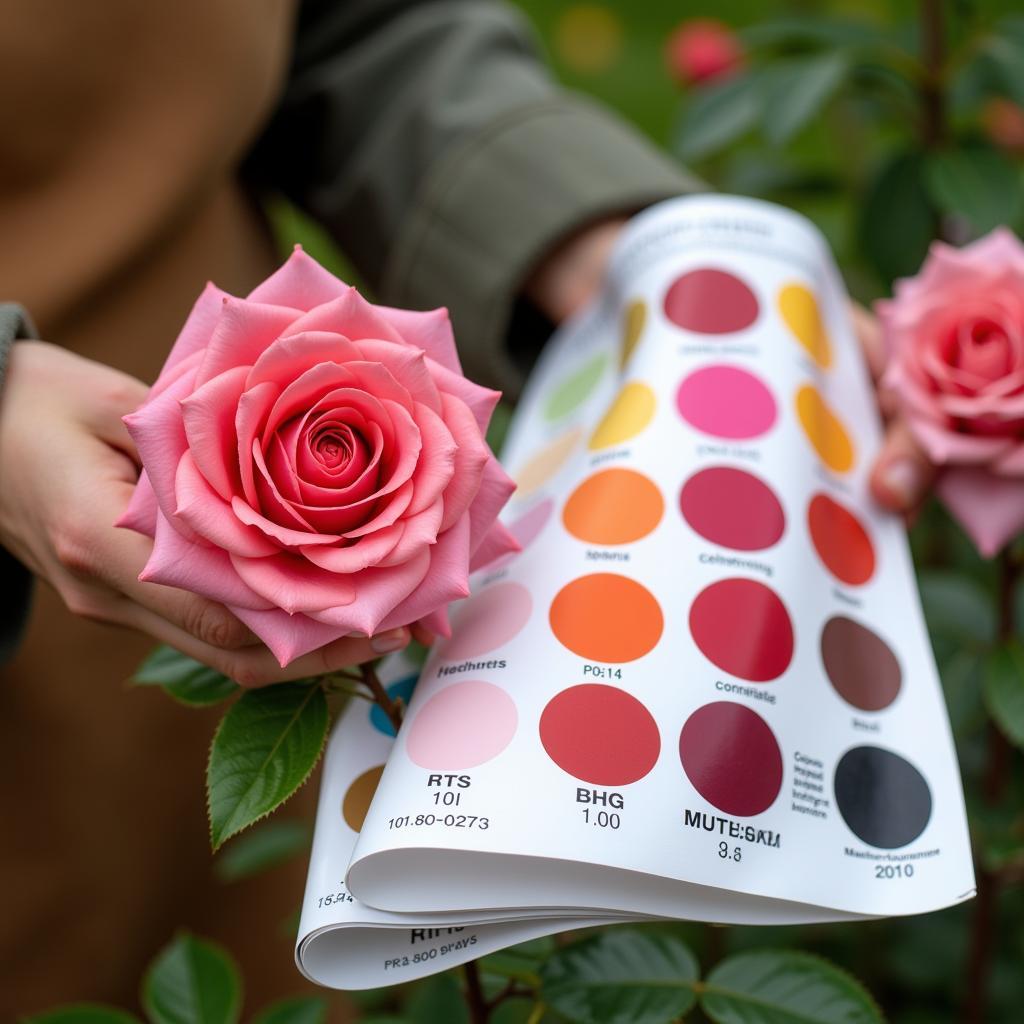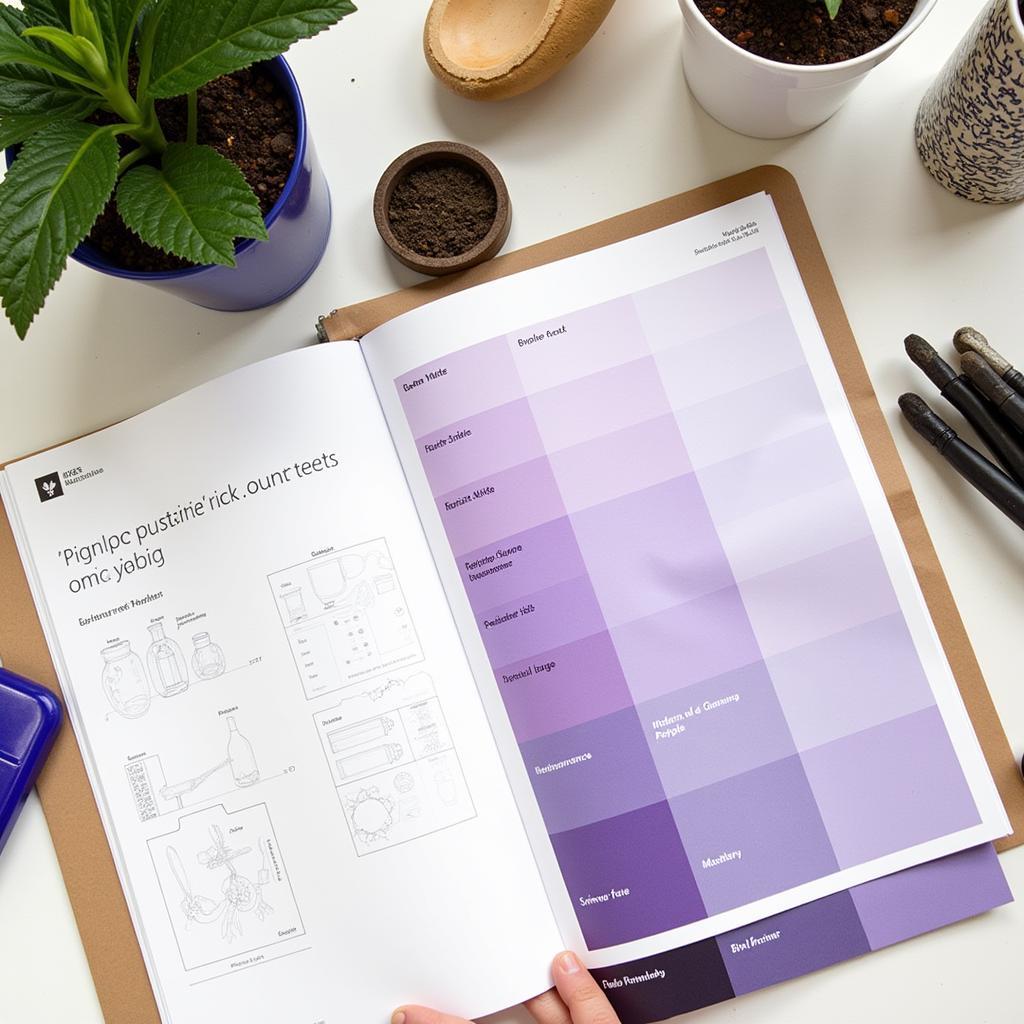The Royal Horticultural Society (RHS) Colour Chart is an indispensable tool for anyone passionate about colour, particularly within the realm of horticulture. This internationally recognized system provides a standardized language to accurately describe plant colours, eliminating ambiguity and enhancing communication among gardeners, botanists, and enthusiasts alike.
 The iconic fan-shaped RHS Colour Chart
The iconic fan-shaped RHS Colour Chart
How does the RHS Colour Chart Work?
The RHS Colour Chart utilizes a numerical system to categorize colours, encompassing a vast spectrum of hues, tones, and shades. Each colour is assigned a unique four-digit code, providing a precise reference point for identification. This system ensures consistency and eliminates the subjective nature of colour perception, which can vary greatly between individuals.
 A gardener using the RHS Colour Chart to identify the precise colour of a rose in full bloom
A gardener using the RHS Colour Chart to identify the precise colour of a rose in full bloom
Benefits of Using the RHS Colour Chart
The RHS Colour Chart offers numerous benefits, making it an invaluable resource for various applications:
- Precise Colour Communication: The standardized coding system ensures clear and unambiguous communication about plant colours, eliminating confusion and misinterpretations.
- Accurate Plant Identification: The chart aids in accurately identifying plant varieties based on their flower, foliage, or fruit colour.
- Effective Garden Design: Gardeners can utilize the chart to create harmonious colour palettes and visually stunning plant combinations.
- Botanical Research: The RHS Colour Chart serves as a standardized tool for recording and analyzing plant colours in scientific research.
Exploring the Chart’s Structure
The RHS Colour Chart is organized into four distinct sections, each representing a different colour group:
- Red: This group encompasses various shades of red, from vibrant crimson to deep burgundy.
- Yellow: This section covers a range of yellows, including pale lemon, rich gold, and warm ochre.
- Blue: From delicate sky blue to deep indigo, this group showcases the diversity of blue hues.
- Green: This section represents various shades of green, encompassing vibrant lime, deep forest green, and everything in between.
Within each colour group, shades are arranged systematically from light to dark, allowing for easy comparison and identification.
 A landscape architect referring to the RHS Colour Chart while working on a garden design plan
A landscape architect referring to the RHS Colour Chart while working on a garden design plan
RHS Colour Chart and its Impact
The RHS Colour Chart has had a profound impact on various fields, shaping how we perceive and communicate about colour within the botanical world. Its influence extends beyond horticulture, inspiring similar colour standardization systems in other industries.
Conclusion
The Royal Horticultural Society Colour Chart stands as a testament to the power of standardized language in fostering understanding and clarity. This invaluable tool continues to bridge communication gaps, empowering individuals to connect through the universal language of colour. Whether you’re a seasoned gardener or simply appreciate the beauty of the natural world, the RHS Colour Chart provides a fascinating glimpse into the intricate world of colour classification and its impact on our understanding of the plant kingdom.